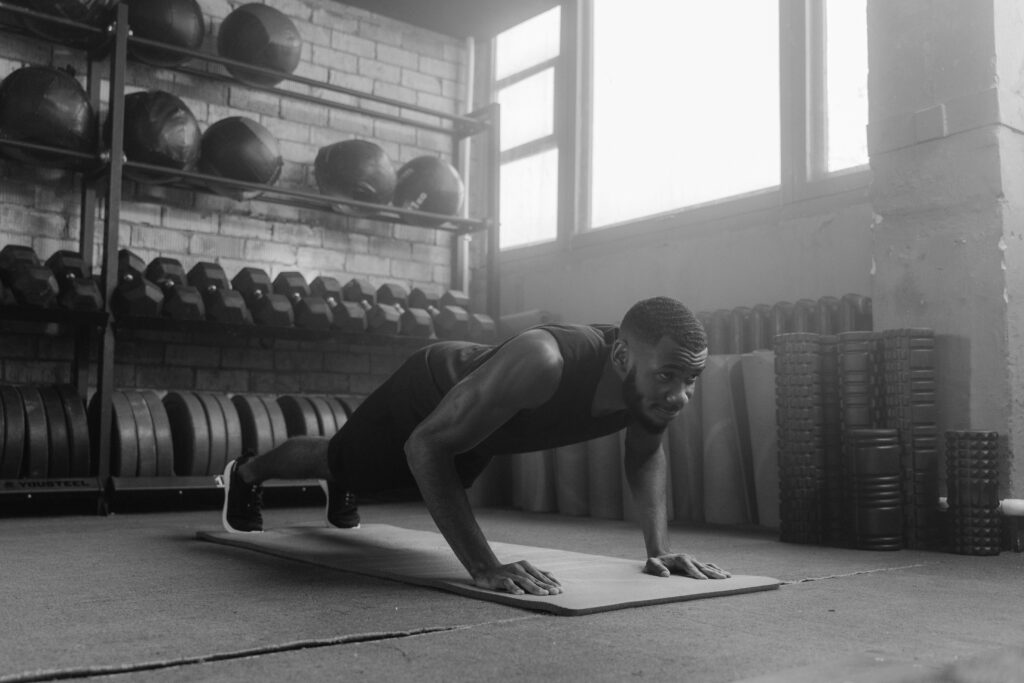During my distance run this morning I began feeling bored with putting in mile after mile on the same route I have been for a couple years. I started thinking about other exercises and ways to train that aren’t just running. I wanted to not only give my legs some time to rest and recover but I wanted to break up the monotony of strictly running all the time. I want to continue to build strength and speed as well as strengthen and tone other parts of my body. So after some research I found 10 of the best cross-training exercises for long distance runners to incorporate into their training to become a stronger runner and cure the boredom.
What is cross-training?
So I started with defining what cross-training is. I found that cross-training is defined as a form of exercise that involves incorporating a variety of different activities or exercises into your workout routine. It involves training different muscle groups, or using different types of exercises or equipment, than those used in your primary sport or activity.
The purpose of cross-training is to improve overall fitness, reduce the risk of injury, and provide variety and mental stimulation in your workout routine. Cross-training can also help prevent overuse injuries by giving certain muscle groups a break while still maintaining cardiovascular fitness. The goal is to choose exercises or activities that complement your primary sport or activity and help improve your overall fitness level.
For example, a runner may incorporate cycling or swimming into their workout routine to build cardiovascular endurance and leg strength without putting additional stress on their joints. A weightlifter may incorporate yoga or Pilates to improve flexibility, balance, and core strength.
The key to effective cross-training is to choose exercises that are safe, enjoyable, and challenging. Cross-training should be incorporated into your overall fitness plan in a way that complements and supports your primary sport or activity.

Benefits of Cross-Training
Cross-training is a valuable component of any distance runner’s training program. Here are some of the benefits of cross-training:
- Reduces the risk of injury: Running is a high-impact exercise that puts a lot of stress on the joints, muscles, and tendons. Cross-training can help reduce the risk of injury by giving these structures a break from the repetitive pounding of running. It can also help build overall body strength and flexibility, which can help prevent injuries.
- Builds endurance: Cross-training exercises like swimming, cycling, and rowing can help build endurance by improving cardiovascular fitness and lung capacity. This can translate to better performance and stamina during long-distance running.
- Improves strength: Cross-training exercises that focus on strength, such as weightlifting, Pilates, and CrossFit, can help build overall body strength. This can help improve running form, reduce the risk of injury, and increase speed and endurance.
- Provides variety: Marathon training can be a long and grueling process. Cross-training can provide variety and prevent boredom, which can help keep motivation high and reduce the risk of burnout.
- Speeds up recovery: Cross-training exercises that focus on flexibility, such as yoga and Pilates, can help speed up recovery by improving circulation and reducing muscle soreness. This can help runners recover more quickly from long runs and hard workouts.
- Helps with mental focus: Cross-training exercises like yoga and Pilates can help improve mental focus and concentration, which can be beneficial during long runs and races. These exercises can also help reduce stress and anxiety, which can help runners stay focused and calm.
Overall, cross-training is an important component of a well-rounded marathon training program. It can help improve overall fitness, reduce the risk of injury, and provide variety and mental focus. Incorporating a variety of cross-training exercises into your training regimen can help you become a stronger, more well-rounded athlete.
10 Cross-training Exercises to Add to Your Training Program
As stated above cross training should compliment the training activity you are performing. In our case we are looking for exercises and activities that compliment long distance running. Here are some options for cross-training exercises for long distance runners:

- Swimming: Swimming is a low-impact exercise that can help build endurance and strength in the upper body. It also helps improve cardiovascular fitness and lung capacity.
- Cycling: Cycling is another low-impact exercise that can help build leg strength and endurance. It’s also a great way to get in some cardio exercise without putting too much stress on your joints.
- Yoga: Yoga is a great way to build flexibility, balance, and strength. It can also help with stress relief and mental focus, both of which are important for marathon training.
- Pilates: Pilates is a form of exercise that focuses on core strength, balance, and flexibility. It can be a great complement to running and can help improve overall body strength.
- Strength Training: Strength training exercises, such as weight lifting, can help build muscle mass and improve overall body strength. This can help prevent injury and improve overall performance.
- CrossFit: CrossFit is a high-intensity workout program that combines elements of weightlifting, gymnastics, and cardio exercise. It can be a great way to build overall strength and endurance, but it’s important to start slowly and gradually increase intensity to avoid injury.
- Rowing: Rowing is a full-body workout that can help build endurance and strength in the upper body, core, and legs. It’s also a low-impact exercise that can be a good option for people with joint pain or injuries.
- Elliptical Trainer: The elliptical trainer is a low-impact exercise machine that can help build cardio endurance and leg strength. It’s a good option for people who want to avoid the impact of running on pavement or trails.
- Calisthenics: Calisthenics is a form of exercise that involves using your own body weight to perform various movements and exercises, without the use of any equipment or weights. This type of exercise typically includes exercises like push-ups, pull-ups, squats, lunges, and planks, as well as more advanced movements like muscle-ups and handstands
- Plyometrics: Plyometric training is a form of exercise that involves explosive and rapid movements, typically involving jumping or bounding. It is a type of training that focuses on developing power, strength, and speed, and is often used by athletes to improve their performance in sports that require explosive movements, such as basketball, soccer, and track and field.

Remember, it’s important to vary your cross-training exercises to avoid overuse injuries and to challenge different muscle groups. You should also gradually increase the intensity and duration of your cross-training workouts over time to avoid injury and improve performance.
Conclusion
So in conclusion I found a solution to my boredom of constantly putting in the long miles on the road. Cross-training incorporated into my training program will ultimately help improve my overall fitness, reduce the risk of injury, and provide variety and mental focus.
You too can add some cross-training into your training program. Choose a couple from the list above that you enjoy and will stick with and add them 1 or 2 days a week.
Let us know some of your favorite cross-training techniques in the comments below.

